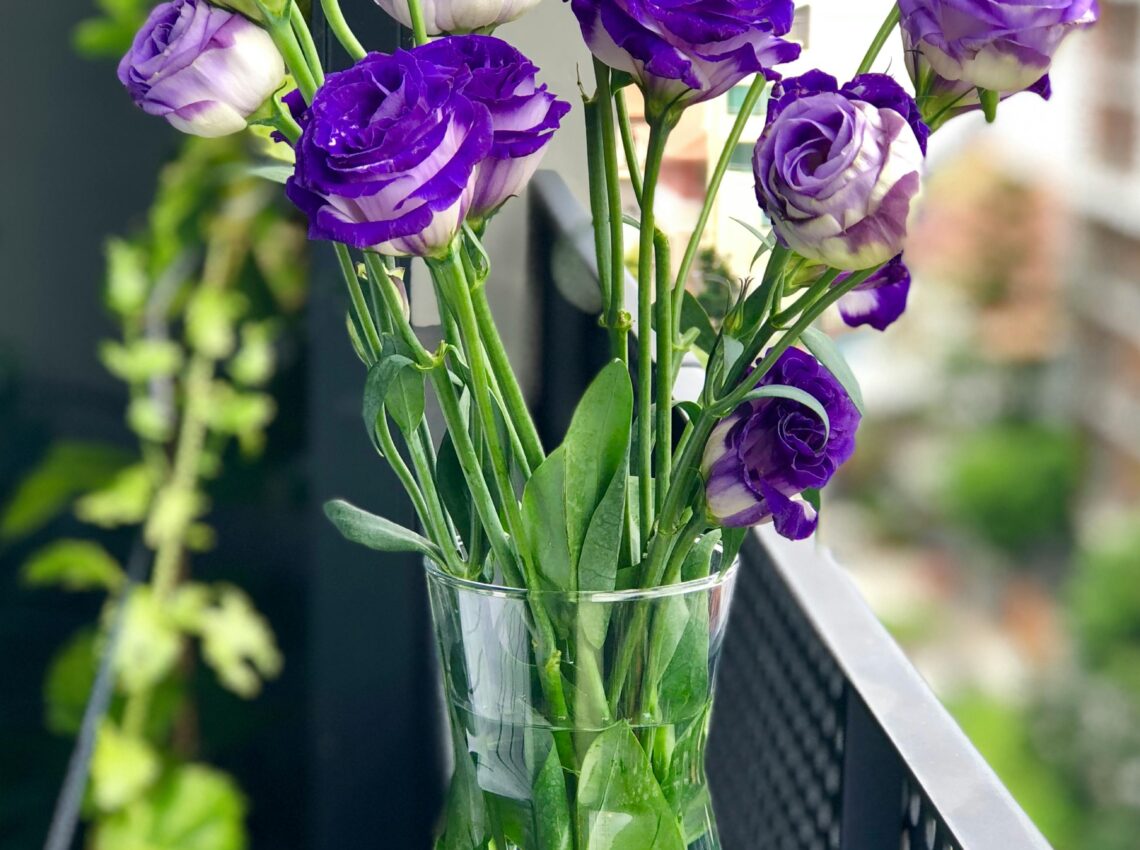Spider Mums: Your Complete Guide to Growing & Enjoying These Unique Blooms

Imagine a flower that looks like it’s straight out of a whimsical painting, with slender, delicate petals that radiate outwards, creating an ethereal, almost spidery effect. That’s the magic of spider mums! These captivating chrysanthemums, known for their long, tubular, and often hooked or coiled florets, stand apart from their more common cousins. They are true showstoppers, adding an exotic flair and delicate elegance to any garden, bouquet, or floral arrangement.
Often associated with the arrival of autumn, spider mums are a favorite among florists and gardeners alike for their unique texture and impressive longevity. If you’re looking to cultivate something truly special, or simply want to understand the allure of these fascinating blooms, you’ve come to the right place. This guide will delve into everything you need to know about growing, caring for, and appreciating the distinct beauty of these fascinating flowers.
What Makes Spider Mums So Special?
While all chrysanthemums are beautiful, spider mums belong to a unique class (Class 11, according to the National Chrysanthemum Society) due to their distinct petal structure. Their “spidery” appearance comes from their long, narrow florets that often have curled or hooked tips, creating an intricate and airy look.
A Feast for the Eyes
- Unique Petal Structure: The defining characteristic is their long, slender, tube-like petals (florets) that can be straight, quilled, or dramatically hooked at the ends. This creates a striking, almost sculptural form.
- Vibrant Color Palette: Spider mums come in a breathtaking array of colors, including crisp whites, soft greens, sunny yellows, fiery oranges, passionate reds, and regal purples. Some varieties even display multiple colors on one bloom.
- Impressive Size: Many varieties produce large, often dramatic blooms that can be focal points in any setting, sometimes reaching several inches in diameter.

Beyond Beauty: Symbolism and Use
Spider mums carry varied meanings across different cultures, adding another layer to their appeal.
- In Asia (particularly Japan): Chrysanthemums, including spider varieties, are highly revered. They symbolize royalty, longevity, happiness, and perfection. The Imperial Seal of Japan features a chrysanthemum design, and Japan even celebrates a National Chrysanthemum Day.
- In the United States: They are generally associated with friendship, happiness, and well-being, often signaling the arrival of autumn.
- In some European countries: Unfortunately, chrysanthemums are sometimes associated with mourning and are used as funeral flowers. However, this is largely a cultural distinction and does not diminish their beauty or positive symbolism elsewhere.
- Florist Favorite: Due to their exotic look and excellent vase life (often lasting up to 2-3 weeks with proper care), spider mums are incredibly popular in floral arrangements, adding texture, height, and a touch of the extraordinary.
Popular Types of Spider Mums to Discover
The world of spider mums offers a rich variety of cultivars, each with its own charm. Here are a few notable examples you might encounter:
- Anastasia Green: A captivating variety celebrated for its long, tubular petals that spiral outward in a vibrant green hue. It’s a statement piece in floral arrangements, offering fantastic contrast and durability.
- Apricot Courtier: Boasts soft apricot tones with densely packed, globe-like blooms, radiating warmth. It’s popular in autumn arrangements for its harmonious blending capabilities.
- Mocha: A pretty spider mum with exceptionally thin, long, and elegant pink florets.
- Equinox: A popular yellow spider mum.
- Senkyo Kenshin: Features a dark peach center with light peach rays, creating a striking visual.
- Seaton’s Galaxy: A striking mauve variety.
- Vesuvio: A classic white spider mum, often seen for its elegant and clean appearance.
These are just a few examples, as new and exciting varieties are continually being developed, offering gardeners and floral enthusiasts a broad palette to choose from.
Growing Spider Mums: Essential Care Tips for Thriving Blooms
Cultivating spider mums can be incredibly rewarding, but they do have specific needs to ensure they produce their spectacular blooms.
1. Choosing the Right Location
- Sunlight is Key: Like most chrysanthemums, spider mums are sun-lovers. They require at least 6 hours of direct sunlight daily to thrive and produce abundant, vibrant blooms. Opt for a south-facing garden or a spot with unobstructed views of the sky.
- Avoid Night Light: Interestingly, these plants are “short-day plants,” meaning they need periods of uninterrupted darkness to induce flowering. Avoid planting them near streetlights or porch lights that might disrupt their natural light cycle.
- Well-Drained Soil: They prefer slightly acidic soil (pH 6.0-6.5) that drains well. If you have heavy clay or very sandy soil, amend it generously with organic matter like compost or well-rotted manure to improve drainage and nutrient content.
- Good Air Circulation: Space your plants at least 18-24 inches apart to allow for proper airflow. This helps prevent fungal diseases like powdery mildew, which mums can be susceptible to.
2. Planting Your Spider Mums
- Timing: The best time to plant spider mums is in early spring after the last danger of heavy frosts has passed. This gives them ample time to establish strong root systems before the blooming season in autumn.
- Preparation: Loosen the soil to a depth of 8-12 inches. Dig holes large enough to accommodate the root ball.
- Depth & Watering: Plant the mums at the same depth they were in their nursery pots. After planting, water them thoroughly to settle the soil around the roots.
- Mulching: Apply a 2-inch layer of organic mulch (shredded leaves, bark, or compost) around the base of the plants. This helps retain soil moisture, regulate temperature, and suppress weeds.

3. Watering Wisely
- Consistent Moisture: Spider mums prefer consistently moist soil, but they absolutely detest soggy conditions. Water deeply once or twice a week, adjusting based on weather conditions and soil moisture.
- Check Soil Moisture: Stick your finger about an inch into the soil. If it feels dry, it’s time to water.
- Water at the Base: Try to water at the base of the plant to avoid getting the foliage wet, which can encourage fungal diseases.
4. Feeding for Flourishing Blooms
- Regular Fertilization: Mums are considered “heavy feeders” and benefit from regular nutrients during their growing season.
- Early Growth: Apply a balanced fertilizer (e.g., 10-10-10) every 4-6 weeks during the growing season (spring through late summer).
- Flowering Boost: As flower buds begin to form in late summer/early autumn, you can switch to a high-potassium fertilizer (like a tomato feed) to encourage abundant blooming. Stop fertilizing once buds are fully formed.
5. The Art of Pinching (Crucial for Bushiness!)
Pinching is essential for producing bushy, well-branched plants with more flowers. Without it, your spider mums can become leggy with fewer blooms.
- When to Pinch: Start pinching when your young plants are about 6-8 inches tall.
- How to Pinch: Simply nip off the top inch of growth from each stem using your thumb and forefinger or clean pruning shears, just above a set of leaves.
- Frequency: Repeat this process every few weeks until mid-summer (around early July in the Northern Hemisphere). This encourages side shoots to develop, leading to a fuller plant and more blooms. Do not pinch after mid-July, as this can prevent flower buds from forming for fall.
6. Pest and Disease Management
- Common Pests: Keep an eye out for aphids, spider mites, and leaf miners.
- Treatment: If you spot pests, treat promptly with insecticidal soap or neem oil.
- Prevention: Good air circulation (proper spacing) and watering at the base help prevent many common fungal issues. Remove any infested or diseased leaves immediately.
7. Winter Protection (for Hardy Varieties)
If you’re growing hardy spider mums in colder climates (zones below USDA Zone 7), they may need winter protection.
- Cut Back: After the first hard frost, cut back the stems to about 3-4 inches above the ground.
- Mulch Heavily: Apply a thick layer (4-6 inches) of straw, shredded leaves, or wood chips over the plant’s crown to insulate the roots from freezing temperatures.
- Potted Mums: For potted mums, move them to a cool, dark, frost-free location like a garage or unheated shed for the winter. Reduce watering significantly.
Styling with Spider Mums: From Garden to Vase
The unique form of spider mums makes them incredibly versatile for both landscape design and floral artistry.
In the Garden
- Focal Points: Plant them in clusters where their unique form can be appreciated, creating dramatic focal points in autumn garden beds.
- Mixed Borders: Combine them with other fall-blooming plants like asters, sedums, or ornamental grasses for a rich tapestry of color and texture.
- Containers: Many varieties thrive in pots, making them perfect for patios, balconies, or entryways. Choose large containers that allow for adequate root growth and moisture retention.

In Floral Arrangements
Spider mums are a florist’s dream!
- Textural Contrast: Their delicate, airy petals provide a beautiful contrast to more traditional, fuller blooms like roses or hydrangeas.
- Height and Movement: Their long stems and dynamic form add vertical interest and a sense of movement to bouquets.
- Long-Lasting Cut Flowers: With proper care, they have an excellent vase life, making them ideal for long-lasting arrangements.
- Care for Cut Mums: When you receive or cut spider mums, immediately re-cut the stems at an angle and place them in deep water with floral food. Remove any leaves that would fall below the waterline to prevent bacterial growth. Keep them in a cool spot away from direct sunlight or drafts.
For inspiration on floral arrangements, consider exploring resources from professional floristry associations or reputable flower suppliers, such as the Society of American Florists, who often showcase different bloom types and design ideas.
The Enduring Allure of the Spider Mum
Spider mums are more than just a pretty face in the garden. They are a testament to nature’s incredible diversity and the beauty that can be found in unique forms. Whether you’re a seasoned gardener looking for a new challenge or a flower enthusiast eager to incorporate exotic elegance into your home, these remarkable blooms offer an abundance of joy and visual intrigue.
By understanding their needs and appreciating their distinct characteristics, you can unlock the full potential of these “spidery” beauties. So go ahead, introduce some spider mums into your world, and prepare to be captivated by their enduring charm and breathtaking display. They are truly a marvel to behold.





